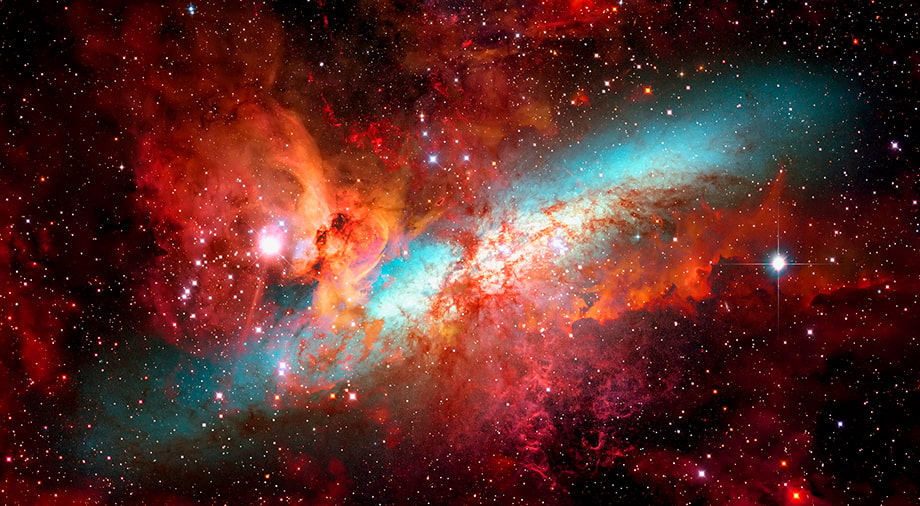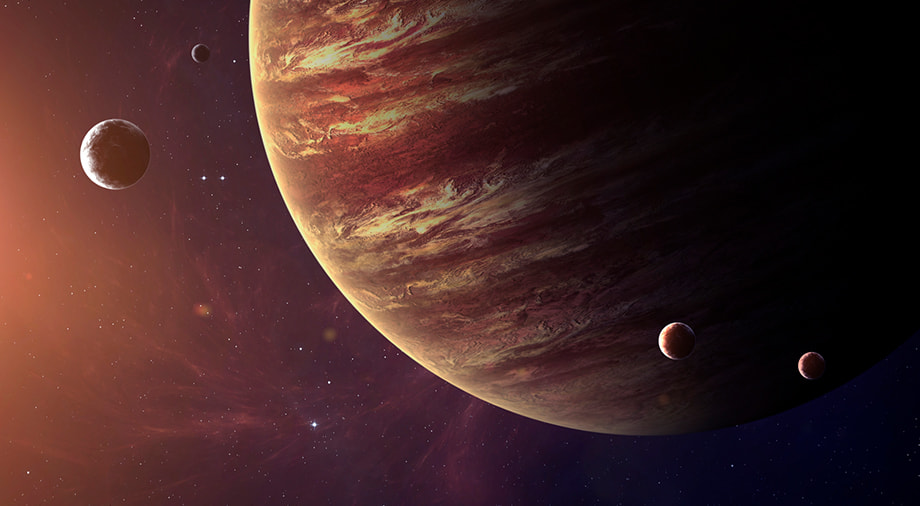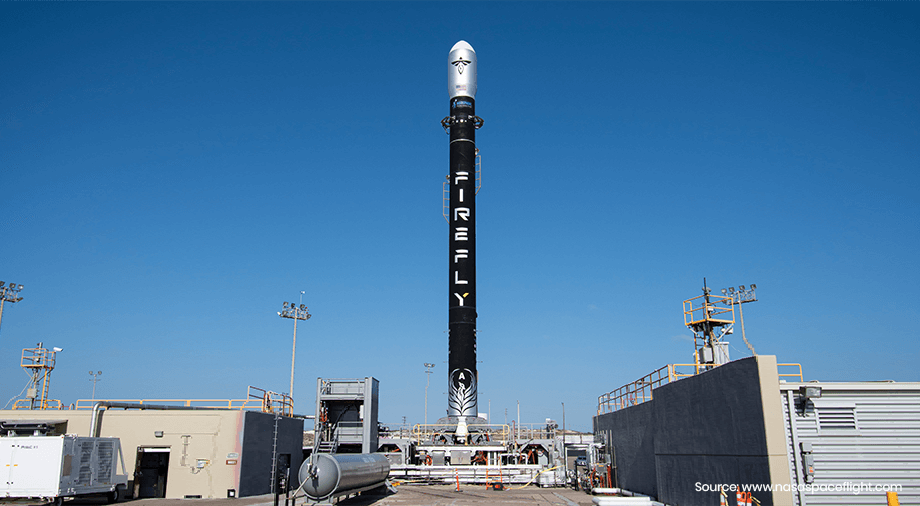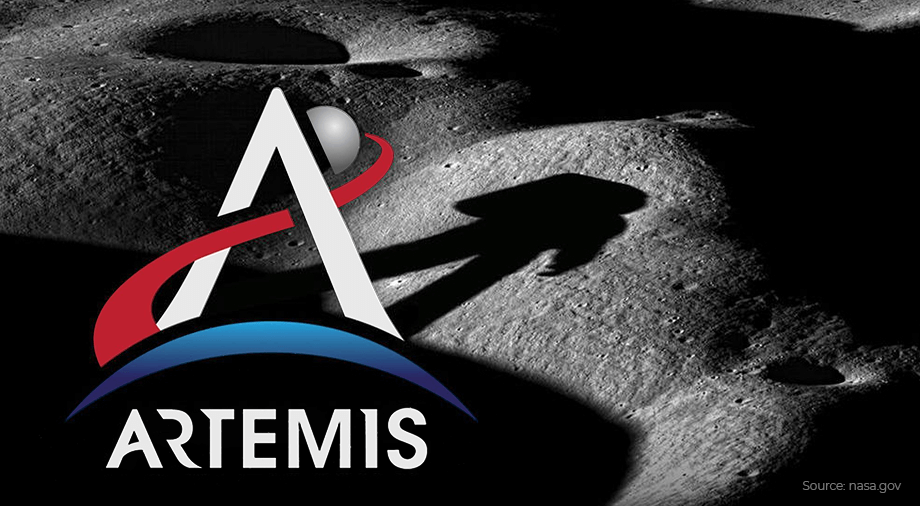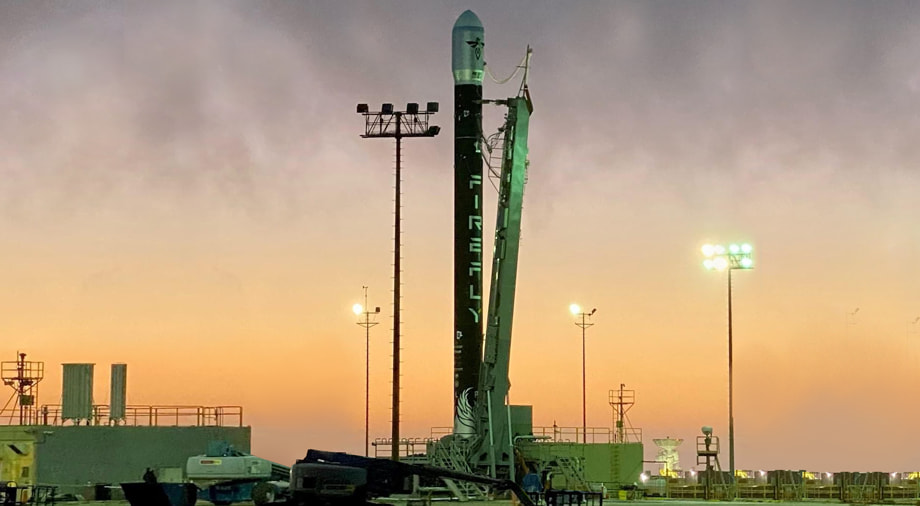Half a century ago, people for the first time escaped near-Earth orbit and stepped onto the surface of another celestial body. Unfortunately, despite all historical significance this entailed, for a long time this event remained just one small step of prestige, made within the framework of the ideological struggle of the superpowers, and not for the sake of some practical necessity. Only in the last decade has the situation begun to change. The commercialization of space and the technological breakthroughs of China have led to plans announced by the United States and China to create bases on the Moon. And Elon Musk’s dream of people on Mars no longer seems so unrealizable.
But space is not limited to the Moon and Mars. It is not even limited to the solar system. Outside lies an enormous universe filled with countless stars and planets.
Many generations of scientists and science fiction writers have taken for granted that one day humanity will be engaged in the conquest of deep space. But is that technologically feasible? And, if so, is there any practical point for humanity to leave their home planet and venture into the depths of space?
Possible targets for deep space colonization
Any discussion about mankind’s possible deep space expansion comes down to find answers to three main questions: how, where, and why? What exactly could we colonize, does technology allow it, and how is such an activity expedient?
Let’s start with the first point. For a long time, the scientific community believed that the solar system ends at Pluto. Then a great void begins, interrupted only by the Oort cloud – a hypothetical cluster of ice bodies on the far outskirts of the solar system, the origin point for new comets that periodically pass by our planet.
We now know that this is not the case. Pluto is not the end of the system, but only one of the largest representatives of the Kuiper belt – a remote and vast region larger than the Main Asteroid Belt. Behind the belt begins an even more distant region of the scattered disk comprising our solar system, which is home to another grouping of ice bodies, which in turn at some point passes into the inner part of the Oort cloud.
So far, astronomers have found so-called trans-Neptunian objects located only approximately within a radius of 18 – 20 billion km from the Sun. All that lies further remains Terra Incognita. But even the scarce data available to us is enough to suggest that this area is inhabited by a large number of celestial bodies, many of which may be comparable in size to Pluto. With a fairly high degree of probability, the Belt may be hiding entire planets larger than the Earth, thrown into these “backyards” during the formation of the solar system. Moreover, astronomers still do not exclude the possibility that somewhere in the vicinity of the Sun there may be one or two cold brown dwarfs or, as they are also called, failed stars: this is the name for objects that represent an intermediate stage between planets and stars.
Obviously, it is this area, beyond the orbit of Neptune, that will become the first target for the long-range expansion of mankind. Before flying to other stars, we need to reconnoiter and map this “frontier”. This is necessary both for security reasons and from a practical point of view. After all, there are valuable resources there (water, oxygen, materials that can be used for the construction of settlements and spaceships), which will be useful in the future for the preparation and supply of interstellar expeditions.
But what’s next? Our Sun’s closest stellar neighbors, like our own Sun, are located on the outskirts of the minor stellar spiral arm of our galaxy, known as the Orion Arm, which can be called a kind of galactic backyard. By the standards of the Milky Way, this region is relatively rarefied, with the average distance between stars measured in several light years. According to many scientists, this factor could play a key role in the birth of life on our planet. Being on the galactic outskirts, the solar system managed to avoid many of the dangers that come from too close proximity to other luminaries.
At the same time, this significantly complicates the task of colonizing other worlds. The nearest star system, Alpha Centauri, is 4.3 light years away. By astronomical standards, this is a mere trifle. By human standards, this is an unimaginably gigantic distance that is difficult even to comprehend.
But the good news is that two of the three components of Alpha Centauri are sun-like luminaries. The fact is that approximately 75% of the stars in the Milky Way are red dwarfs. Such luminaries are much dimmer than the Sun and at the same time have a very “wayward” character. For example, they can dramatically change their luminosity, as well as produce powerful flares, many times stronger than solar ones, that are dangerous for all living things. So the fact that two of the three stars closest to us are similar to the Sun can be called a stroke of luck. If they have exoplanets whose orbits are in the habitable zone, the conditions on their surface may well resemble those on Earth.
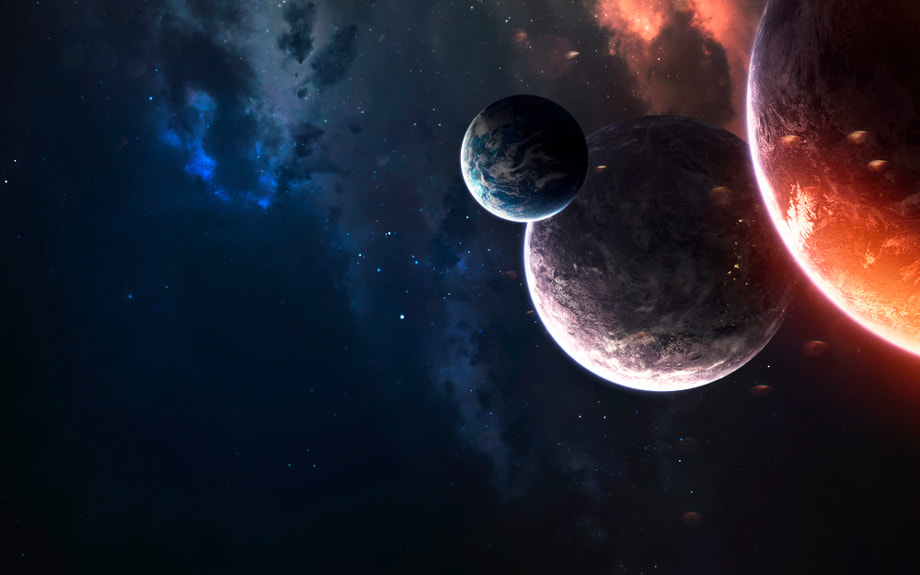
As for the third component of the system, Proxima Centauri, then we don’t even need to hope. We already know that at least two exoplanets orbit around it, and the orbit of one of them lies in the habitable zone. Of course, due to the peculiarities of red dwarfs, the climatic conditions of this world are still the subject of speculation. But in any case, even now we can confidently predict that if humanity is destined to send an expedition to the worlds of other stars, then the Alpha Centauri system will almost certainly become our first destination.
Apparently, most of our other neighbors also have exoplanets. At the moment, astronomers have found them in 60 of 400 stars located within a radius of 10 parsecs from the Sun. In particular, the available data suggests that the stars of Barnard, Wolf 359, Lalande 21185, and Epsilon Eridani have invisible companions. This also takes into account the fact that modern search methods for finding exoplanets have a number of significant limitations. Because of this, astronomers find it much easier to find large exoplanets located close to stars than small stone bodies with long orbital periods.
However, a new generation of super-powerful telescopes, which have much higher sensitivity and are able to obtain images with a much higher resolution, may significantly improve the situation.
So, if humanity would have the opportunity to reach the stars, it can be predicted that by that time we will have a very rich selection of potential targets. Moreover, we already know that some stellar systems can have several planets suitable for colonization at once. An example is the TRAPPIST-1 system located 40 light years from Earth. At least seven stone worlds revolve around this small star, and the orbits of three of them at once lie in the habitable zone.
If we ever manage to get to large clusters and central regions of our galaxy, where the average distance between stars is measured not in light years, but in light weeks, or even days, this will greatly facilitate the task. Calculations carried out by various groups of researchers have shown that even with a fleet of relatively slow ships, a technologically advanced civilization can completely conquer the center of the Milky Way in just a few tens of millions of years.
The matter of transit
Of course, all the variety of potential targets for exploration and colonization described above will be completely useless if we cannot get to them. Unfortunately, at this stage, humanity does not have the technological capabilities to build ships capable of reaching other stars in any acceptable time frame. But at least we are already in a position to reflect on the main aspects of this endeavor.
The key is the issue of traction. Obviously, to fly to the stars, we need something more efficient than the chemical-fueled rocket engines used today. Various engineers and science fiction writers have proposed many options for solving this problem. In theory, an antimatter engine would give the best results. Its operating principle is based on the interaction of matter and antimatter – when the two collide, the result is a massive explosion This explosion releases a colossal amount of energy, and the speed of the outflow of particles formed during this process is close to relativistic, which allows the spacecraft to accelerate to very high speeds. An example is the Valkyrie project developed in the 1990s. In theory, this starship would be able to accelerate to 92% of light speed.
Antimatter has long ceased to be a fantasy – scientists first managed to synthesize antihydrogen back in 1995. So why haven’t we gone to the stars yet? In order to create an antimatter rocket, two fundamental problems must be solved. First, it is necessary to reduce the cost of antimatter many times over and set up its production on an industrial scale. Currently, antimatter can only be obtained with the help of particle colliders. Therefore, the amount of antimatter created is measured in billionths of a gram, and its cost is truly astronomical. Second, you need to come up with a reliable way to store antimatter over long periods of time. But, if humanity manages to solve these problems, the antimatter engine may be able to provide us with the fastest interstellar travel that we can currently conceive of.
Another promising option is to use a solar sail. This is the name given to a device that uses the pressure of sunlight or a laser on a mirrored surface to propel a spacecraft. This technology is also not just a fantasy. It has already been tested during several space missions, and right now the Lightsail-2 apparatus, equipped with a sail with a surface area of 32 m2, is operating in low-Earth orbit.
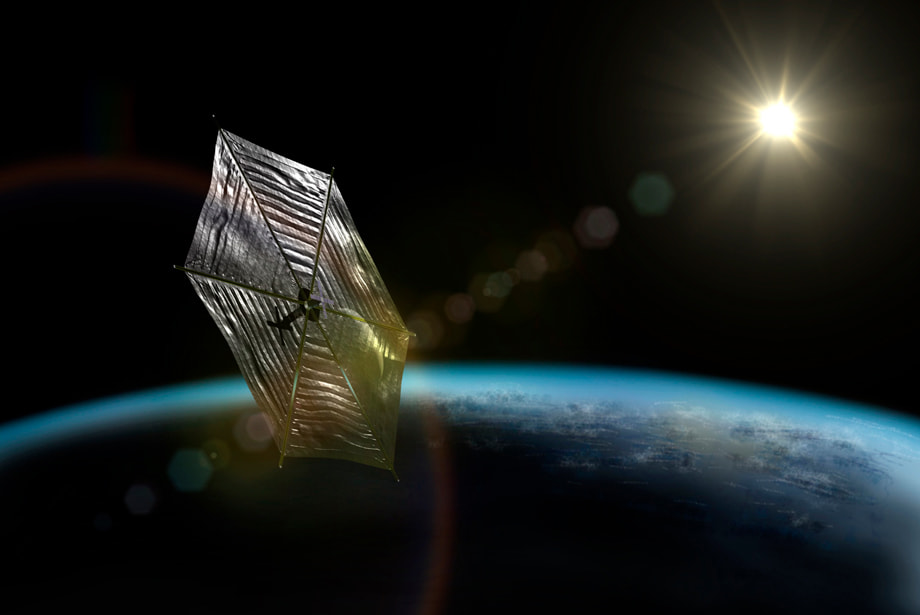
The main advantage of a solar sail is that there is no need to carry fuel with you, which usually accounts for the lion’s share of a spacecraft’s mass. But again, it’s not that simple. In its original form, the sail is only suitable for flights in the inner area of the solar system. If we want to go to the depths of space, we will have to build a super-powerful laser, whose beam can be used to accelerate the “sailboat”. The creation of such an accelerator will undoubtedly become the most ambitious project in history, requiring the concerted efforts of the entire world.
Another obvious problem with a solar sail starship is that it then needs to be slowed down somehow. One of the solutions to the problem is to use a second sail. As the spacecraft approaches a destination star, the second sail will detach from the ship and act as a lens, focusing light on the starship and allowing it to slow down. Another possibility is a combination of sail and another power engine (for example, the already mentioned antimatter engine). The first will be used to accelerate the starship, the second – to decelerate it while approaching the target.
But the most realistic option so far is a nuclear propulsion spacecraft: a spacecraft propelled by the energy released during the detonation of small nuclear or thermonuclear charges. No matter how crazy this scheme sounds at first glance, it can be workable – an idea confirmed by both simulation results and practical experiments. According to some calculations, a nuclear propulsion spaceship could accelerate to 10% of light speed, which could reach Alpha Centauri in 45 years – within a human lifespan. Additionally, according to many experts, at the moment this is the only type of relatively fast interstellar ship that can be created based solely on available technologies. All other theoretical concepts, like the already mentioned antimatter engine, have a large number of unsolved problems and physical assumptions that make their possible implementation a matter of a very distant future.
An alternative to all of the above schemes is the creation of a “slow” generational ship – a closed ecosystem designed for a journey of hundreds and thousands of years. The advantage of such a starship is that it does not require the development of fundamentally new engines. The main disadvantage is the need to create a completely self-sufficient self-sustaining ecosystem that can exist without external supplies, and ensure the survival of a human colony for centuries, or even millennia. It is possible that in reality, this will turn out to be an even more difficult task than building an antimatter engine.
The infamous “Biosphere-2” experiment, conducted in the early 1990s, is one example of an attempt to create a closed self-sufficient human ecosystem which clearly demonstrated a number of dangers that can lie in wait for people in prolonged isolation. There was a breakdown of the research team into several hostile groups and the uncontrolled reproduction of pests, which led to a rapid drop of oxygen under the dome, because of which the experiment had to be terminated. Even ordinary wind, as it turned out, plays a critical role in an ecosystem: without regular swaying, trees quickly become fragile and break.
An alternative to a generation ship could be technology that can immerse people for hundreds of years and even thousands of years in a state of anabiosis or stasis, and then return them to life. This could solve many of the fundamental problems of a long flight. It’s no surprise that anabiosis capsules, known colloquially as stasis chambers, have long been an integral part of science fiction. Unfortunately, in reality, research in this direction is still in its infancy. At the moment, it is difficult to even make predictions about when a breakthrough can come true and even whether it is possible at all.
So it is possible that if humanity is still destined to reach the stars, this will be done not by some separate expedition, but by a method of small “jumps”. If our civilization begins to develop the Kuiper belt (for example, Pluto and Eris), then over time the settlers will begin to create outposts on more and more distant ice objects, gradually moving away from the Sun. Using these objects as a kind of “transshipment base” (as an analogy, the settlement of America and Australia by ancient people), over time, their descendants will be able to reach the analogue of the Oort cloud around Alpha Centauri and through it – exoplanets.
The feasibility of deep space
But, even knowing where and how we can fly, we still need to find the answer to the final question: why? What can the development of deep space give to mankind?
It is worth starting a conversation on this topic with the fact that exploration and curiosity is genetically inherent in our nature. It was thanks to this drive to explorer that mankind was able to settle across all earthly continents and become the dominant form of life on the planet. And, if we think carefully about everything, perhaps we don’t even need to look for some other for space expansion. As all historical experience shows, as soon as humanity has the opportunity to colonize a new region, it immediately uses it. And in this regard, space is unlikely to be an exception. If technology gives our species a real opportunity to create sustainable and safe settlements on other worlds, there will immediately be those who will want to take advantage of that and leave the Earth.
But we should not forget that in the past, the colonization of new lands was not particularly systematic. It has always been accompanied by mass tragedies and mistakes. So in the case of space, at the very least, we should make every possible effort to avoid repeating the mistakes of previous generations and think in advance how best to organize this process.
From a practical point of view, the colonization of deep space can also bring a number of benefits to humanity. The most obvious of these is that our species will receive insurance in case something happens to the Earth. Often this role is assigned to Mars. But we must understand that this is a dead world that has lost most of its resources, which is unlikely to be able to claim the status of a full replacement for the Earth. If we take into account the gigantic dimensions of space, however, then we can come to the conclusion that humanity has a good chance of finding planets with comfortable conditions in the vastness of our galaxy, which could become a full-fledged home.
By the way, the resources of deep space – primarily the Kuiper belt and the Oort cloud – can also be useful to our species, and not just use them as transshipment bases for starships. If in the distant future, mankind engages in planetary engineering and tries to terraform Mars and Venus, then it will need to deliver huge masses of water there. Of course, water can be found closer (for example, on the moons of Jupiter). But it is possible that it will be much easier to catch and tow several large ice bodies into the inner part of the solar system, rather than trying to carry water to Mars by space tankers from Europe. Moreover, this entire region can become a strategic reserve in case that our own planet suffers some kind of global catastrophe and it has to be rebuilt.
And, finally, it’s important not to forget about another eternal dream of mankind – the search for an answer to the question of whether we are alone in the Universe. This thought has worried and excited generations of people. The search for extraterrestrial life will certainly be another important factor that will drive the exploration of deep space. Of course, there is the chance that, in the end, we are alone. But even with this outcome, we will at least protect our species from extinction. And besides, if we are alone – we at least will be the first to create an interstellar civilization.

